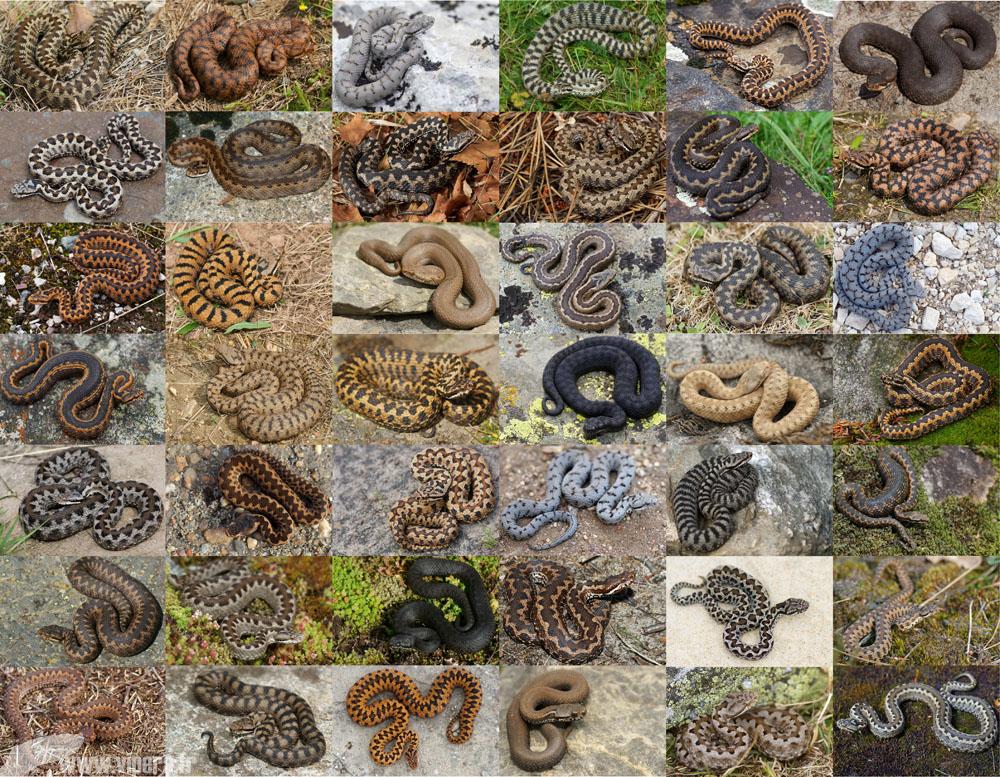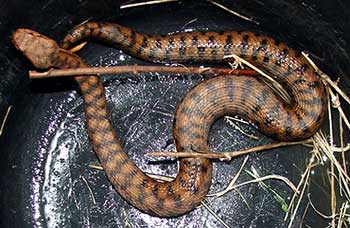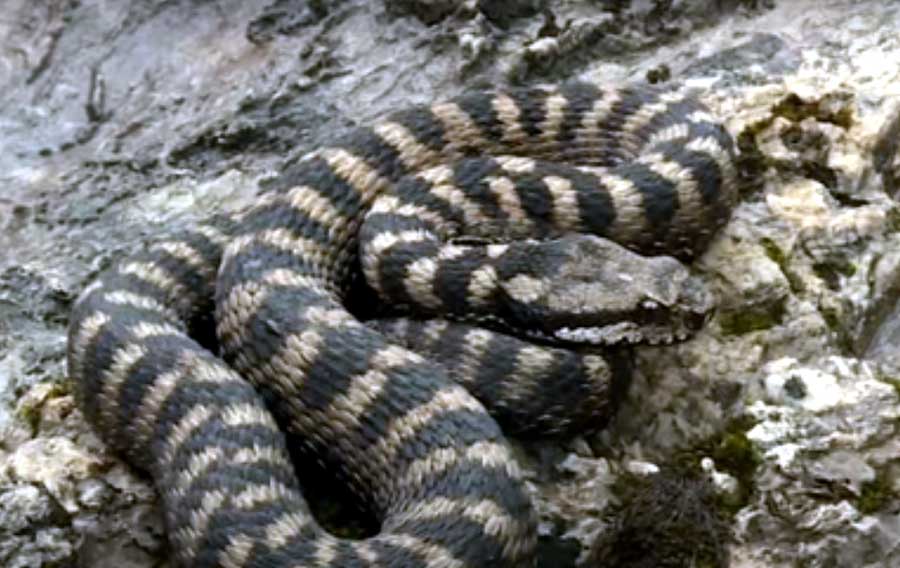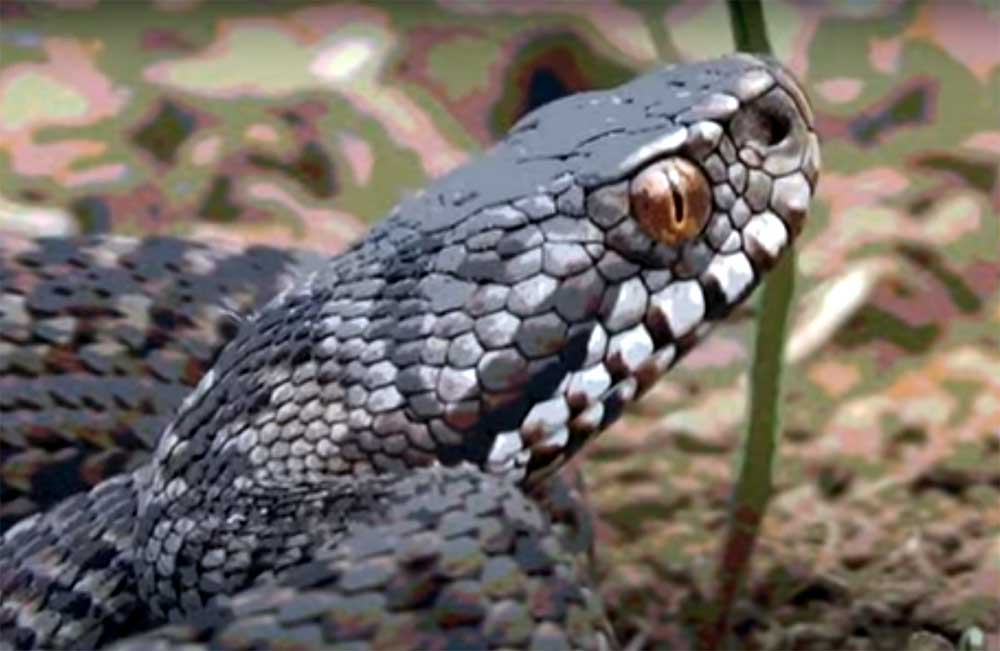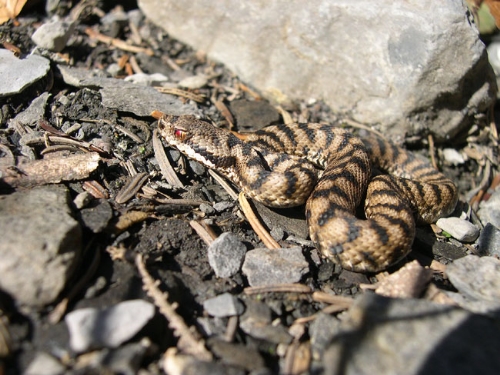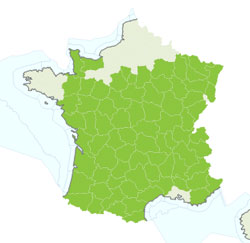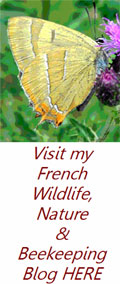The Asp Viper is a small snake up to perhaps 85cm
but the majority tend to be only 20 to 40cm. Their body is quite thick as is the short tail and their colouration and markings are quite variable generally with a zig zag or broken zig zag on their backs. There is a darker line or band which runs backwards from each of the eyes which have vertical slit pupils. Scales on both the top and side of the head are small. Easily confused with the non-venomous Viperine snake at first glance, especially in regions where they share the same colouration.
They can be found in most regions of France
With the exception of the extreme north and north east. With a preference for dry habitats, sunny slopes, stone walls, east or south east facing hedgerows and similar habitats where they can enjoy the early morning sun which is where the best observations tend to be made.
They will often live in old holes in the ground made previously by voles, mice etc.
Hunting takes place mainly in the evenings and part of the night, prey is mainly small mammals which they seek out in their holes, killing them in a matter of moments with their venom before eating them head first, larger prey is often released after having been bitten, and is then tracked down by scent as the victim weakens. They never eat fish or amphibians but can still be found near water.
Coupling takes place in May accompanied by ritual confrontations between males.
This species is ovoviviparous and the female produces anything from 2 to 12 young that are released in a protective membrane that they break out in a matter of a few minutes using forceful movements of their heads. The first moult or skin shedding (sloughing) takes place almost immediately and they are already capable of injecting small quantities of venom and killing their own prey.
Although diurnal much of their activity is in the evenings, particularly in very hot weather. Calm and cautious, their first response when disturbed is to flee for cover, in fact they are nowhere near as aggressive as some of the non venomous snakes in France. Their venom fangs are retracted except at the moment of biting. Many first defensive bites are "dry" with little or no venom being injected.
Hibernation takes place from October until March but this is by no means definitive and they may be active during the winter months if the temperatures are favourable.

